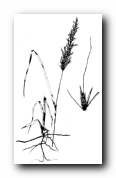
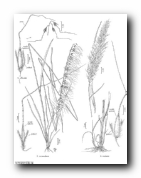
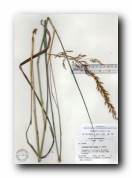
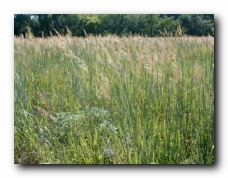
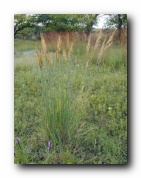
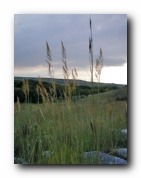
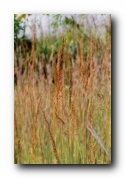
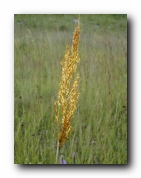
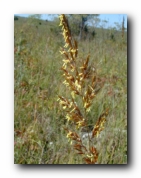
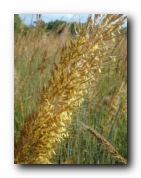

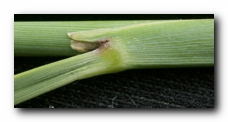
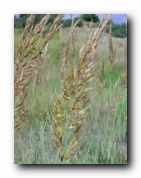
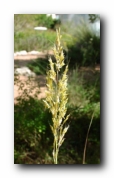
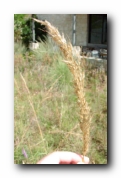
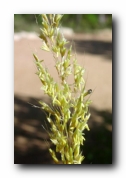
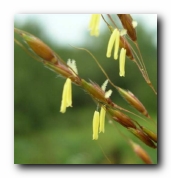
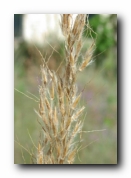
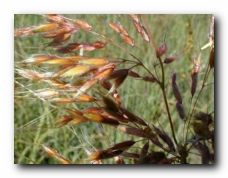
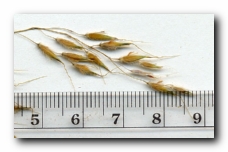
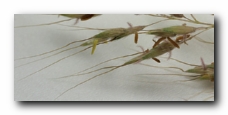
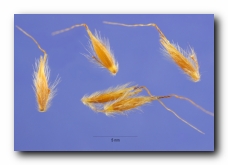
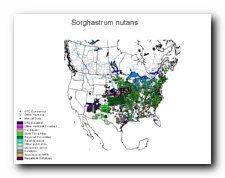
40" Rows:
Broadcast:
1.5 pounds pure live seed per acre
4.5 pounds pure live seed per acre
Sandy:
Loam:
Clay:
High
High
Moderate
Habit: Perennial, with short scaly rhizomes. Culms: 1-2.5 m. tall, simple, erect, nodes pubescent or bearded. Blades: 30-60 cm. long, 5-13 mm. wide, flat, tapering to a narrow base, very rough, often glaucous. Sheaths: Upper shorter than the internodes, usually smooth and glabrous, auricled. Ligule: 2-4 mm. long, thick, stiff. Inflorescence: Panicles narrowly oblong, large, rather dense, bronze-yellow, with the principal branches solitary but branching near the base and hence appearing verticillate, the apex usually nodding, at first open, contracted and darker after flowering, 15-30 cm. long, summit of branchlets, rachis joints and pedicels grayish-hirsute, bearing spikelets in pairs, one sessile, the other pedicelled, reduced. Spikelets: Sessile spikelet hirsute, 6-8 mm. long, lanceolate, nearly terete, perfect, pedicellate spikelet wanting or rudimentary, represented merely by a hairy pedicel at one side of the sessile spikelet. Spikelets at length drooping, yellowish or reddish brown and shining, clothed, especially toward the base, with fawn-colored hairs, the twisted awn longer than the spikelet. Glumes: Lanceolate, about equal, leathery, the edges inflexed over the second, golden-brown, the first one densely pubescent with long erect hairs, 9-nerved, second 5-nerved, hairy on the margins and at the base. Lemmas: Sterile lemma thinly hyaline, about 5 mm. long, lanceolate, pubescent above; the fertile lemma hyaline, with a long awn, 10-15 mm. long, closely spiral up to the bend, then loosely twisted. Palea: Obsolete. Habitat: Prairies, open woods and dry slopes. July-September. Use: An important forage plant in the prairie and important as a constituent of prairie hay. Synonyms: Sorghastrum avenaceum (Michx.) Nash
Special Notes: